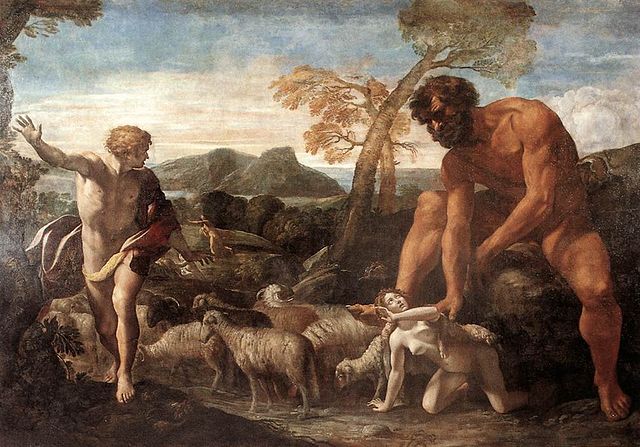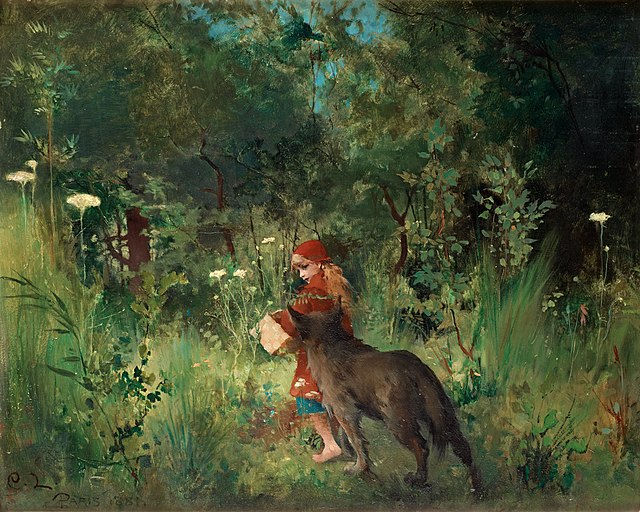An ogre is a legendary monster depicted as a large, hideous, man-like being that eats ordinary human beings, especially infants and children. Ogres frequently feature in mythology, folklore, and fiction throughout the world. They appear in many classic works of literature, and are most often associated in fairy tales and legend.
Puss in Boots before the ogre. One of the platters on the table serves human babies (illustrated by Gustave Doré).
Puss in Boots before the ogre (illustrated by Walter Crane).
Hop-o'-My-Thumb steals the ogre's seven-league boots (illustrated by Gustave Doré, 1862).
Giovanni Lanfranco: Norandino and Lucina Discovered by the Ogre, oil on canvas, c. 1624
A fairy tale is a short story that belongs to the folklore genre. Such stories typically feature magic, enchantments, and mythical or fanciful beings. In most cultures, there is no clear line separating myth from folk or fairy tale; all these together form the literature of preliterate societies. Fairy tales may be distinguished from other folk narratives such as legends and explicit moral tales, including beast fables. Prevalent elements include dragons, dwarfs, elves, fairies, giants, gnomes, goblins, griffins, merfolk, monsters, talking animals, trolls, unicorns, witches, wizards, magic, and enchantments.
The European fairy tale Little Red Riding Hood and the Wolf in a painting by Carl Larsson in 1881.
Hop-o'-My-Thumb and the ogre in an 1865 illustration
A picture by Gustave Doré of Mother Goose reading written (literary) fairy tales
Ivan Bilibin (1876-1942)'s illustration of the Russian fairy tale about Vasilisa the Beautiful








